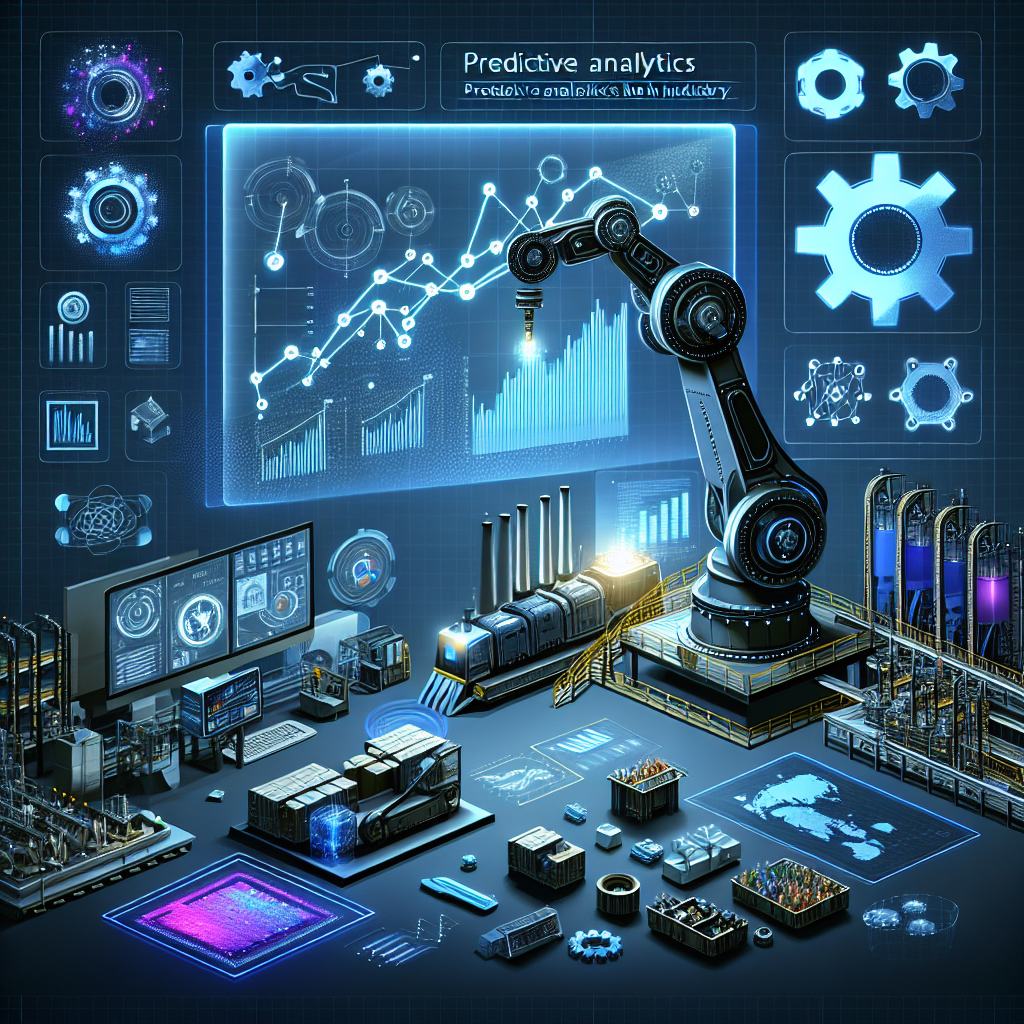In today’s fast-paced and ever-changing business environment, companies are constantly looking for ways to improve their demand planning processes. With the rise of artificial intelligence (AI) technology, predictive analytics has become a powerful tool for forecasting future demand and optimizing inventory levels. By leveraging AI-powered predictive analytics, companies can make more accurate predictions, reduce costs, and ultimately improve their bottom line.
What is AI-Powered Predictive Analytics for Demand Planning?
AI-powered predictive analytics for demand planning is a technology that uses advanced algorithms and machine learning techniques to analyze historical data, market trends, and other relevant factors to predict future demand for products or services. By using sophisticated models and algorithms, AI-powered predictive analytics can provide more accurate forecasts compared to traditional methods.
One of the key benefits of AI-powered predictive analytics is its ability to analyze vast amounts of data quickly and efficiently. This allows companies to make more informed decisions based on real-time information, leading to improved forecasting accuracy and reduced costs.
How does AI-Powered Predictive Analytics work?
AI-powered predictive analytics works by analyzing historical data, market trends, and other relevant factors to identify patterns and trends that can be used to predict future demand. The technology uses advanced algorithms and machine learning techniques to process and analyze large datasets, allowing companies to make more accurate forecasts.
By using AI-powered predictive analytics, companies can leverage historical data to identify patterns and trends that can help them make more informed decisions about future demand. This can lead to improved forecasting accuracy, reduced costs, and increased efficiency in the demand planning process.
Benefits of AI-Powered Predictive Analytics for Demand Planning
There are several key benefits of using AI-powered predictive analytics for demand planning in the industry:
1. Improved Forecasting Accuracy: AI-powered predictive analytics can provide more accurate forecasts compared to traditional methods. By leveraging advanced algorithms and machine learning techniques, companies can make more informed decisions based on real-time data, leading to improved forecasting accuracy.
2. Reduced Costs: By using AI-powered predictive analytics, companies can reduce costs associated with overstocking or understocking inventory. By accurately predicting future demand, companies can optimize inventory levels and reduce the risk of stockouts or excess inventory.
3. Increased Efficiency: AI-powered predictive analytics can help companies streamline their demand planning processes and make faster, more informed decisions. By automating tasks and analyzing data quickly and efficiently, companies can improve efficiency and save time.
4. Better Decision-Making: By using AI-powered predictive analytics, companies can make better decisions about inventory levels, production schedules, and resource allocation. By leveraging real-time data and insights, companies can optimize their operations and improve overall performance.
5. Competitive Advantage: Companies that leverage AI-powered predictive analytics for demand planning can gain a competitive advantage in the industry. By making more accurate forecasts and optimizing inventory levels, companies can better meet customer demand and outperform competitors.
FAQs
Q: How accurate are AI-powered predictive analytics for demand planning?
A: AI-powered predictive analytics can provide more accurate forecasts compared to traditional methods. By leveraging advanced algorithms and machine learning techniques, companies can make more informed decisions based on real-time data, leading to improved forecasting accuracy.
Q: What data is used in AI-powered predictive analytics for demand planning?
A: AI-powered predictive analytics uses a variety of data sources, including historical sales data, market trends, customer behavior, and external factors such as economic indicators and weather patterns. By analyzing these data sources, companies can identify patterns and trends that can help them make more informed decisions about future demand.
Q: How can companies implement AI-powered predictive analytics for demand planning?
A: Companies can implement AI-powered predictive analytics by working with technology providers that specialize in demand planning solutions. These providers can help companies integrate AI-powered predictive analytics into their existing systems and processes, allowing them to leverage advanced algorithms and machine learning techniques to improve forecasting accuracy.
In conclusion, AI-powered predictive analytics for demand planning is a powerful technology that can help companies optimize their inventory levels, reduce costs, and improve overall performance. By leveraging advanced algorithms and machine learning techniques, companies can make more accurate forecasts, streamline their demand planning processes, and gain a competitive advantage in the industry. As AI technology continues to evolve, the use of predictive analytics for demand planning will become increasingly important for companies looking to stay ahead of the competition.

